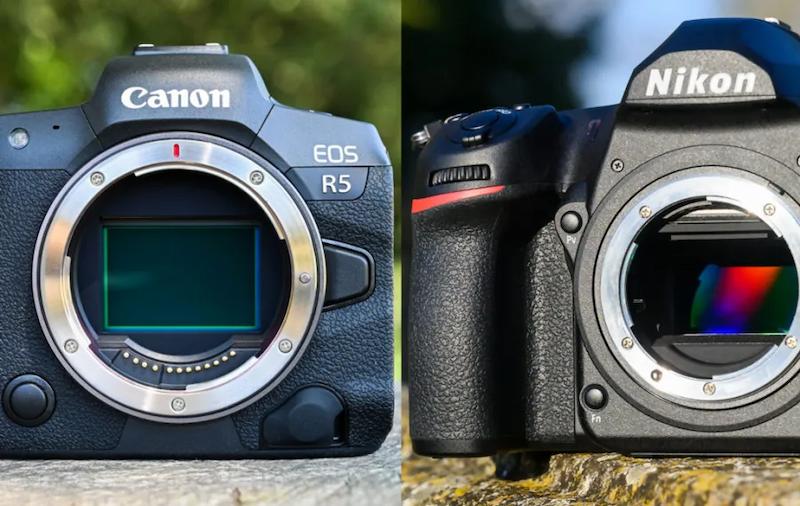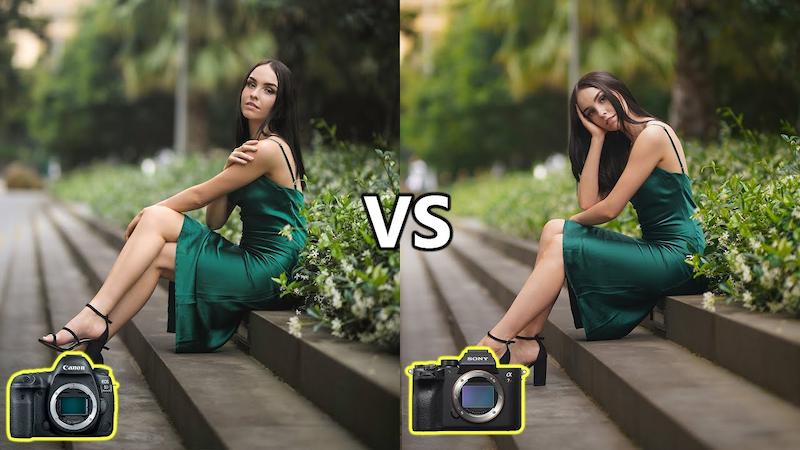Choosing between a mirrorless camera and a DSLR can be a tough decision for photographers, whether you’re a beginner or a seasoned pro. Both types of cameras have their strengths and weaknesses, and understanding these differences can help you make an informed decision. In this guide, we’ll break down what sets mirrorless cameras apart from DSLRs, covering aspects such as design, viewfinder technology, autofocus, shooting speed, and video recording. By the end, you’ll have a clear idea of which camera type suits your photography style best.

What Is a Mirrorless Camera?
A mirrorless camera is a type of digital camera that, as the name suggests, lacks the mirror mechanism found in DSLR cameras. This allows the camera to be more compact and lightweight while still offering advanced features like interchangeable lenses and high-quality image sensors.
What Is a DSLR?
A DSLR (Digital Single-Lens Reflex) camera uses a mirror mechanism to direct light from the lens to an optical viewfinder. When the shutter button is pressed, the mirror flips up, allowing light to hit the image sensor and capture the image.
What’s the Difference Between a Mirrorless Camera and a DSLR?

Understanding the key differences between a mirrorless camera and a DSLR will help you decide which is better suited for your needs.
Design
DSLR cameras use a mirror and prism system to reflect light into an optical viewfinder, contributing to their bulk and weight. While heavier, this design provides a solid, balanced feel, especially when using larger lenses. The additional space allows for bigger batteries, often leading to better battery life.
In contrast, mirrorless cameras omit the mirror and optical viewfinder, resulting in a more compact and lightweight design. This makes them easier to carry, ideal for travel and street photography. However, the smaller body can limit battery size, often leading to shorter battery life. The smaller grip can also be less comfortable for extended use.
Viewfinder Technology
DSLRs feature an optical viewfinder (OVF) that shows a real-time view through the lens, offering a lag-free, natural perspective, even in low light. Since no electronic display is involved, it doesn’t affect battery life. However, exposure settings and adjustments are only visible after taking the shot.
Mirrorless cameras use electronic viewfinders (EVF) or LCD screens that provide a digital preview of the image with current settings applied. While this is helpful for precise adjustments, EVFs can lag in low light and consume more battery power.
Autofocus and Shooting Speed
DSLRs typically use a phase-detection autofocus system, which is fast and reliable for tracking moving subjects, making them ideal for sports and wildlife photography. However, they may switch to slower contrast-detection autofocus during live view or video mode.
Mirrorless cameras combine phase and contrast-detection autofocus directly on the sensor, leading to faster and more accurate autofocus, even in video mode. Many also feature advanced tracking systems like face and eye detection, and they often offer faster burst shooting speeds, making them excellent for action photography.
Video Recording
Mirrorless cameras generally outperform DSLRs in video, offering advanced autofocus with eye-tracking, higher resolutions like 4K and 8K, and in-body image stabilization (IBIS) for smoother handheld shooting. The electronic viewfinder also provides a live preview of settings while recording. While DSLRs can record high-quality video, their autofocus performance is typically slower and less suited for professional video work.
Conclusion
Both mirrorless cameras and DSLRs have their strengths, and the right choice depends on your needs as a photographer. Mirrorless cameras offer a compact, lightweight design, real-time feedback via electronic viewfinders, and excellent autofocus, making them a strong choice for travel, street photography, and video production. On the other hand, DSLRs remain a favorite for photographers who prefer optical viewfinders, superior battery life, and a wider selection of lenses. Whichever you choose, understanding the core differences will help you make the best decision based on your personal preferences and shooting style.
FAQs
Are mirrorless cameras better for beginners or professionals?
Mirrorless cameras are suitable for both beginners and professionals. Many entry-level models are user-friendly, with simplified controls and tutorials, while high-end models offer advanced features like 4K video recording and fast autofocus, making them ideal for professionals.
Can you use DSLR lenses on mirrorless cameras?
Yes, with the use of lens adapters, you can use DSLR lenses on mirrorless cameras. Many manufacturers offer adapters that maintain autofocus and other functions, allowing photographers to use their existing DSLR lenses on newer mirrorless systems.
Which camera type has better battery life?
DSLRs generally have better battery life compared to mirrorless cameras. This is because DSLRs use optical viewfinders, which consume less power than the electronic viewfinders or LCD screens in mirrorless cameras. However, battery life in mirrorless models is improving with advancements in battery technology.
